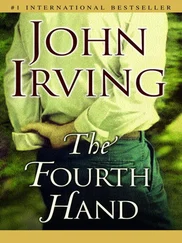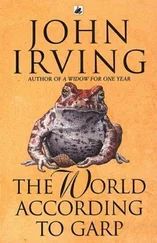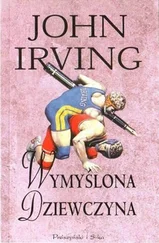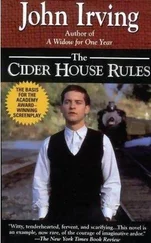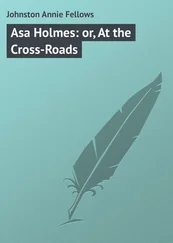It wasn’t the first time Farrokh had asked Vinod to drive by his old Malabar Hill home. From the moving taxi, the house was barely visible. The former Daruwalla family estate reminded the doctor of how tangential his contact with the country of his birthplace had become, for Farrokh was a foreigner on Malabar Hill. Dr. Daruwalla lived, like a visitor, in one of those ugly apartment buildings on Marine Drive; he had the same view of the Arabian Sea as could be found from a dozen similar places. He’d paid 60 lakhs (about 250,000 dollars) for a flat of less than 1,200 square feet, and he hardly lived there at all—he visited India so rarely. He was ashamed that, the rest of the time, he didn’t rent it out. But Farrokh knew he would have been a fool to do so; the tenancy laws in Bombay favor the tenants. If Dr. Daruwalla had tenants, he’d never get them out. Besides, from the Inspector Dhar movies, the doctor had made so many lakhs that he supposed he should spend some of them in Bombay. Through the marvels of a Swiss bank account and the guile of a cunning money-dealer, Dhar had been successful in getting a sizable portion of their earnings out of India. Dr. Daruwalla also felt ashamed of that.
Vinod seemed to sense when Dr. Daruwalla was vulnerable to charity. It was his own charitable enterprise that the dwarf was thinking of; Vinod was routinely shameless in seeking the doctor’s support of his most fervent cause.
Vinod and Deepa had taken it upon themselves to rescue various urchins from the slums of Bombay; in short, they recruited street kids for the circus. They sought the more acrobatic beggars—demonstrably well coordinated children—and Vinod made every effort to steer these talented waifs toward circuses of more merit than the Great Blue Nile. Deepa was particularly devoted to saving child prostitutes, or would-be child prostitutes; rarely were these girls suitable circus material. To Dr. Daruwalla’s knowledge, the only circus that had stooped to adopt any of Vinod and Deepa’s discoveries was the less-than-great Blue Nile.
To Farrokh’s considerable discomfort, many of these girls were Mr. Garg’s discoveries—that is, long before Vinod and Deepa had found them. Mr. Garg was the owner and manager of the Wetness Cabaret, where a kind of concealed grossness was the norm. Strip joints, not to mention sex shows, aren’t permitted in Bombay—at least not to the degree of explicitness that exists in Europe and in North America. In India, there’s no nudity, whereas “wetness”—meaning wet, clinging, almost transparent clothing—is much in evidence, and sexually suggestive gestures are the mainstay of so-called exotic dancers in such seedy entertainment spots as Mr. Garg’s. Among such spots, even including the Bombay Eros Palace, the Wetness Cabaret was the worst; yet the dwarf and his wife insisted to Dr. Daruwalla that Mr. Garg was the Good Samaritan of Kamathipura. In the many lanes of brothels that were there, and throughout the red-light district on Falkland Road and on Grant Road, the Wetness Cabaret was a haven.
It was only a haven compared to a brothel, Farrokh supposed. Whether one called Garg’s girls strippers or “exotic dancers,” most of them weren’t whores. But many of them were runaways from the Kamathipura brothels, or from the brothels on Falkland Road and on Grant Road. In the brothels, the virginity of these girls had been only briefly prized—until the madam supposed they were old enough, or until there was a high enough offer. But when many of these girls ran away to Mr. Garg, they were much too young for what the Wetness Cabaret offered; ironically, they were old enough for prostitution but far too young to be exotic dancers.
According to Vinod, most men who wanted to look at women wanted the women to look like women; apparently, these weren’t the same men who wanted to have sex with underage girls—and even those men, Vinod claimed, didn’t necessarily want to look at those young girls. Therefore, Mr. Garg couldn’t use them at the Wetness Cabaret, although Farrokh fantasized that Mr. Garg had used them in some private, unmentionable way.
Dr. Daruwalla’s Dickensian theory was that Mr. Garg was perverse because of his physical appearance. The man gave Farrokh the creeps. Mr. Garg had made an astonishingly vivid impression on Dr. Daruwalla, considering that they had met only once; Vinod had introduced them. The enterprising dwarf was also Garg’s driver.
Mr. Garg was tall and of military erectness, but with the sort of sallow complexion that Farrokh associated with a lack of exposure to daylight. The skin on Garg’s face had an unhealthy, waxy sheen, and it was unusually taut, like the skin of a corpse. Further enhancing Mr. Garg’s cadaverlike appearance was an unnatural slackness to his mouth; his lips were always parted, like the lips of someone who’d fallen asleep in a seated position, and his eye sockets were dark and bloated, as if full of stagnant blood. Worse, Mr. Garg’s eyes were as yellow and opaque as a lion’s—and as unreadable, Dr. Daruwalla thought. Worst of all was the burn scar. Acid had been flung in Mr. Garg’s face, which he’d managed to turn to the side; the acid had shriveled one ear and burned a swath along his jawline and down the side of his throat, where the raw pink smear disappeared under the collar of his shirt. Not even Vinod knew who’d thrown the acid, or why.
All Mr. Garg’s girls needed from Dr. Daruwalla was the trusted physician’s assurance to the circuses that these girls were in the pink of health. But what could Farrokh say about the health of those girls from the brothels? Some of them were born in brothels; certain indications of congenital syphilis were easy to spot. And nowadays, the doctor couldn’t recommend them to a circus without having them tested for AIDS; few circuses—not even the Great Blue Nile—would take a girl if she was HIV-positive. Most of them carried something venereal; at the very least, the girls always had to be de-wormed. So few of them were ever taken, even by the Great Blue Nile.
When the girls were rejected by the circus, what became of them? (“We are being good by trying,” Vinod would answer.) Did Mr. Garg sell them back to a brothel, or did he wait for them to grow old enough to be Wetness Cabaret material? It appalled Farrokh that, by the standards of Kamathipura, Mr. Garg was considered a benevolent presence; yet Dr. Daruwalla knew of no evidence against Mr. Garg—at least nothing beyond the common knowledge that he bribed the police, who only occasionally raided the Wetness Cabaret.
The doctor had once imagined Mr. Garg as a character in an Inspector Dhar movie; in a first draft of Inspector Dhar and the Cage-Girl Killer , Dr. Daruwalla had written a cameo role for Mr. Garg—he was a child molester named Acid Man. Then Farrokh had thought better of it. Mr. Garg was too well known in Bombay. It might have become a legal matter, and there’d been the added risk of insulting Vinod and Deepa, which Dr. Daruwalla would never do. If Garg was no Good Samaritan, the doctor nevertheless believed that the dwarf and his wife were the real thing—they were saints to these children, or they tried to be. They were, as Vinod had said, “being good by trying.”
Vinod’s off-white Ambassador was approaching Marine Drive when the doctor gave in to the dwarf’s nagging. “All right, all right—I’ll examine her,” Dr. Daruwalla told Vinod. “Who is she this time, and what’s her story?”
“She is being a virgin,” the dwarf explained. “Deepa is saying that she is already an almost boneless girl—a future plastic lady!”
“Who is saying she’s a virgin?” the doctor asked.
“She is saying so,” Vinod said. “Garg is telling Deepa that the girl is running away from a brothel before anyone is touching her.”
Читать дальше


